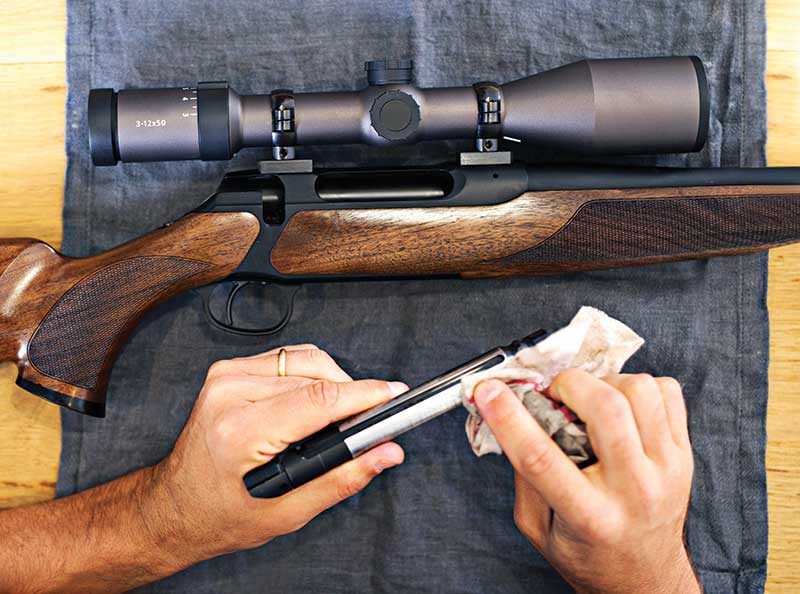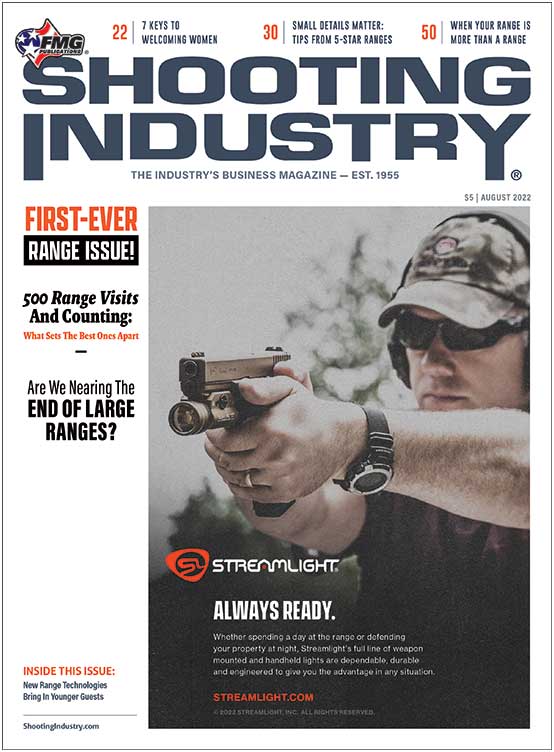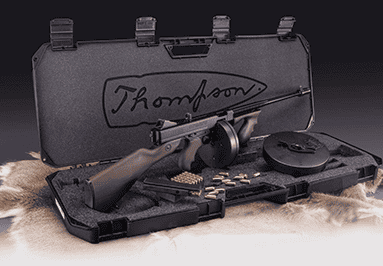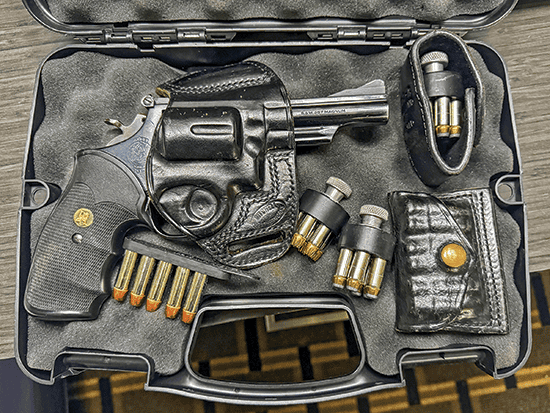No Range? No Problem.
4 Considerations For Retail-Only Locations
News flash: You don’t need a range to be successful in this industry. Yes, having a range to host the “live-fire experience” gives range operators a leg up to create opportunities for welcoming enthusiasts. Liability concerns, zoning issues, the presence of other established ranges and the significant capital needed to build a range means this opportunity just isn’t available to most retail-only locations.
But there’s a reason why storefront dealers have been the bedrock of this industry for decades — they’ve found ways to be successful by having the right mix of inventory on hand and a knowledgeable sales team to meet the needs of customers in their self-defense or recreational shooting journeys. It’s all about creating value for customers.
Here are four ways retail-only locations have found success adding value to customers, while also coming close to replicating the range experience — without a range.
1. Dry-Fire Training
If your store doesn’t offer training — it’s a missed opportunity. Whether it’s introducing first-time gun owners to basic firearms handling or an experienced user looking to take training up a notch, your store’s classes provide another touch point with customers. Done right, training will create goodwill in the community and make your store the “go to” place for customers.
One type of training that has gained momentum over the past two years is dry-fire training. Fueled by concerns in ammunition availability and price, dry-fire training has been added as a regular course offering by instructors. A benefit for retail-only facilities: it doesn’t require a range.
Debbie Rose, founder of Girls Shoot Guns Too, recently added dry-fire laser training guns — such as those from Smart Firearms Training Devices — as instruction tools.
“By not expending any ammunition, you don’t need a range and can train anywhere,” she noted.
Dry-fire training is also appealing to “gun-shy” first-time shooters, Rose added.
“If someone is really nervous, we’ll start with Smart Firearms Training Devices training guns or use them as a warm up. They help get you into the mindset of shooting,” she said.
A number of dry-fire companies have cornered this market in recent years, including: Mantis, Strikeman, LASR, CoolFire Trainer and DryFireMag. If you’re not able to incorporate these products in training, try adding them to your inventory.
2. Educational Seminars
There are a number of worthy topics to present in a seminar format for customers. Hosting an on-site seminar would serve two purposes: to drive revenue (either through a fee to attend the seminars, offering related products for sale or both) and to enhance your store’s visibility in the community. Here are some ideas:
• Gun Care: With millions of first-time gun owners joining our ranks over the past two years, chances are good many of them don’t know how to clean their guns properly. Consider adding a “Gun-Care 101” class to teach customers how to properly maintain their firearms. Sales tip: have pre-packaged or all-in-one kits ready to sell to customers after the seminar.
• Reloading: With market volatility over the past decade, interest in reloading has jumped. A basic reloading class could jumpstart a customer’s intrigue in this segment, leading to a number of follow-up purchases.
• Being Your Own First Responder: Classes like “Stop The Bleed” not only appeal to CCW customers and home defenders, but also to anyone concerned with community safety. A number of dealers have added this topic to their offerings.
• Legislative Updates: At the federal level, the industry is facing multiple attacks. The Bipartisan Safer Communities Act was signed into law in late June. In mid-July, Congress is again on the move with the Assaults Weapons Ban of 2021 (H.R.1808) likely headed toward a vote. Depending on your state, you already know whether elected officials are supportive of gun rights or not. Educating customers on both federal and state developments, especially during a midterm election year, could influence their (and friends and family) decisions at the ballot box.
This isn’t an exhaustive list, hunter education, draw stroke basics, mental preparedness, or seminars designed to counter criminal activity in your area (such as Ultimate Defense’s “How To Survive A Carjacking”) represent other potential options.
If your store doesn’t have a classroom, consider hosting a seminar after hours — and encourage customers to purchase products used or presented in the class.
3. Shooting Simulators
It’s no secret: the capital needed to add a shooting simulator is significantly less than adding a live-fire range component to a store’s footprint. If you can afford to devote space to a simulator, it presents a ready-made opportunity to offer real-time training or experiences to customers.
One company that installs shooting simulators is Sports Entertainment Specialists. Company President Todd Mallon, in an interview with SI Contributing Editor Tim Barker last year, argued an effective simulator will give customers another reason to visit your establishment.
“The name of the game is just to get people coming back in the door,” he said. “It’s a very easy process to introduce new shooters when you use a simulator.”
To get the most out of a simulator, Mallon recommends stores promote training.
“If people are looking to make money from a simulator, training is far and away the best option,” he added.
“The name of the game is just to get people coming back in the door. It’s a very easy process to introduce new shooters when you use a simulator.”
Todd Mallon, President Sports Entertainment Specialists
Ava Flanell, SI contributing editor and owner of Elite Firearms & Training in Colorado Springs, Colo., has also found success adding a virtual reality trainer from Point Blank Simulator.
“With a computer, camera and HD projector, you can turn a laser trainer into a much more immersive training experience for students,” she stated. “The system can even make use of the Microsoft Xbox Kinect to track the user’s movement for a more dynamic experience. This allows a number of training scenarios with safe dry-fire that include shooting from behind cover, and it continually adjusts the view based on the position of the user.”
Flanell points out immersive training provides students with real-time experiences.
“This kind of technology enables teaching a lot of defensive scenarios you usually can’t on most ranges,” she added.
“Force-on-force simulators are a great training opportunity a lot of people don’t get to experience and it’s incredibly valuable for beginners and experienced shooters alike.”
4. Partnering With A Range
Lastly, if you can’t offer customers a range, bring the range to them. Retail-only locations can seek out symbiotic relationships — such as partnering with a local range — which could benefit both parties.
Shad Biltz, co-owner and COO of two Mad Dog Armory (with a location in Largo and Tampa, Fla.), has found success partnering with a private range.
“We help drive membership to them. Our kickback is being able to use the facility. We kind of scratch each other’s backs,” he said.
A note of caution: if you partner with a store with a range, you run the risk of losing business there. Biltz learned this the hard way before partnering with the private range, bringing his customers to a store with an indoor range.
“I’d take customers in to use the range, and then they’d become their customers,” he shared.
If your store can find the right range partner, it’s a win-win for both businesses. And, it extends the shooting sports to a broader customer base.
Dealers, what other strategies have you employed to boost revenue without adding the “range experience”? Let us know: comments@shootingindustry.com.






